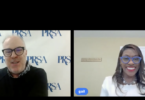Editor’s note: This is the 2nd in a series of 12 guest posts from industry thought leaders predicting key trends that will impact the public relations industry in 2013. Hosted under the hashtag #PRin2013, the series began Jan. 7, 2013, with a compilation post previewing some of the predictions.
As we kick off a new year, our industry can expect plenty of change and challenge to navigate, but even greater opportunity to leverage. Here’s my take on a few of the trends that will shape what’s next.
Global brands will shift more dollars to local strategies – As multinational companies continue expanding across country and cultural boundaries, they will focus more resources on making meaningful connections with local audiences. Brands will strive to make their promises, product offerings and PR strategies look and feel closer to home through content that has a distinct local tone, style, dialect and flair. And it’s more than just language – truly inclusive and global companies will increase their trans-creation efforts rather than simply translating, reflecting an understanding that “local” goes beyond geography to encompass customs, beliefs and affinities.
Brands will be defined from the inside out – Similarly, companies will use “inside-out content” to showcase the stories of people who are unique and authentic to an organization. We’ll see employees, customers and entrepreneurial suppliers at the forefront of campaigns to illustrate how companies are helping their own and positively impacting the lives of others. The more individual the better as these powerful stories create relevance, resonance and relationship – the magical point of affiliation stakeholders are looking for.
Standard metrics will drive new measurement models –The industry will finally roll out a set of standard metrics that helps position public relations as more outcome-driven. We’ll have a golden opportunity to create fresh conversations around measurement that will result in customized dashboards and key performance indicators directly tied to a myriad of business goals. In addition, brands are going to demand stronger reporting around social media that shows more tangible ties to sales, behaviors and attitudes.
Expect more mobile “moments of truth” – The spectacular rise of smartphones and tablets will continue to drive the demand for content on the go. PR pros will find themselves leading multi-channel/multi-device initiatives focused on driving the path to purchase and brand engagement. Increasingly, it will be a photo or video that does the trick. And expect to see more second-screen strategies designed to engage highly connected, multi-tasking audiences in brand- and reputation-building initiatives.
Stepped up recruiting of non-traditional hires – More new hires will come from non-traditional backgrounds — and not just in digital and social media, but in areas where public relations can realize exponential growth such as: strategic planning, change management, branding, research, project management, business consulting, design, video and web development. Alternative titles, creative compensation and flexplace work initiatives will become more common as talent from diverse backgrounds converge. Companies that can effectively integrate and manage remote-based employees will be more successful attracting and retaining top talent than those tied to a traditional workplace model.
Public relations will play a bigger role in leading integrated communications solutions – 2013 will also see more major brand campaigns led by PR and supported with marketing dollars. This should come as no surprise; marketers continue to look for more effective ways to solve business problems across the enterprise, and they’re gravitating to the greater engagement and higher ROI public relations can provide. While PR pros are often excellent collaborators, the challenge will come in getting our creative counterparts in other disciplines to “play well with others” when they’re not in the driver’s seat.
Elise S. Mitchell, APR, Fellow PRSA, is the CEO of Mitchell Communications Group and CEO of Dentsu Public Relations Network







[…] What’s Next: Predictions for Public Relations In 2013 (Elise S. Mitchell, APR, Fellow […]
[…] “The industry will finally roll out a set of standard metrics that helps position public relations as more outcome-driven.” – PRSay […]